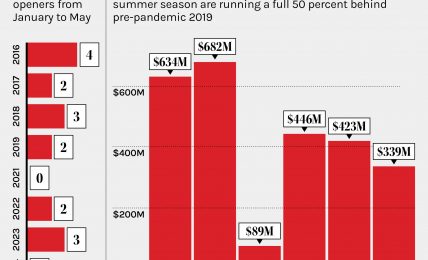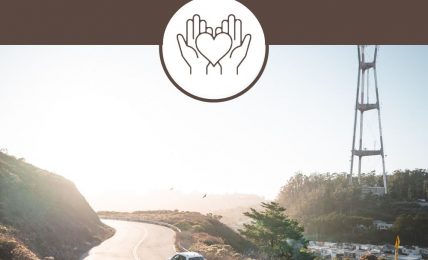Hurricanes, tornadoes, and cyclones are among the most powerful and destructive forces of nature. These massive storms can bring devastating winds, flooding, and destruction to anything in their path. Whether you live in a hurricane-prone area or just want to stay informed, it’s essential to understand the impact these storms can have.
Sadly, at the time of this writing we just experienced Hurricane Helene in the Southeast USA which we sadly had to add to this list. Our hearts go out to those in the states affected and to the families who lost loved ones.
Below is a list of deadliest hurricanes worldwide, so you can better prepare for future disasters and protect your family. There has never been a better time to get more prepared for natural disasters like these.
Cyclone Winston (2016) – Fiji
Cyclone Winston was the strongest tropical cyclone ever recorded in the Southern Hemisphere. It struck Fiji in February 2016 with wind speeds up to 180 mph, devastating villages and communities across the island nation.
Around 44 people were killed, but the destruction left tens of thousands homeless. The storm’s strength and its impact on vulnerable populations highlighted the importance of building resilient communities in hurricane-prone regions.
Hurricane Wilma (2005) – Caribbean and Mexico
Hurricane Wilma was the most intense hurricane ever recorded in the Atlantic. In October 2005, Wilma struck the Caribbean and parts of Mexico’s Yucatán Peninsula, causing widespread destruction.
Over 60 people were killed, but the storm’s damage was extensive, with homes, hotels, and infrastructure destroyed. Wilma’s slow movement caused days of heavy rain and flooding, making it one of the most damaging hurricanes in the region.
Hurricane Andrew (1992) – United States
Hurricane Andrew hit South Florida in August 1992 as a powerful Category 5 storm. The storm brought extreme winds that flattened entire neighborhoods, leaving over 250,000 people homeless.
Although 65 people died, the damage was extensive, with costs totaling $27 billion. Andrew led to significant changes in building codes and disaster preparedness in Florida and across the U.S.
Hurricane Harvey (2017) – United States
Hurricane Harvey struck Texas in August 2017, dumping record-breaking amounts of rain on the Houston area. The storm caused catastrophic flooding, with some areas receiving over 40 inches of rain.
More than 100 people died due to flooding and storm-related incidents. Harvey highlighted the increasing risks of severe flooding from hurricanes and the need for improved infrastructure and flood management.
Hurricane Ike (2008) – United States
Hurricane Ike made landfall in Texas in September 2008, but its impact was felt far beyond. The storm caused widespread destruction along the Gulf Coast and up through the Midwest, with damage totaling $30 billion.
Ike claimed the lives of more than 195 people, and its storm surge caused massive flooding in Galveston and nearby areas. The storm led to significant improvements in emergency preparedness along the Texas coast.
Hurricane Helene (2024) – United States
Hurricane Helene, which made landfall in Florida on September 26, 2024, as a Category 4 hurricane, has caused widespread devastation across the southeastern United States. The storm has claimed more than 230 lives, making it the one of the deadliest hurricanes to hit the mainland U.S. The total death toll has not yet been confirmed, which can affect the placement on this list.
North Carolina was particularly hard-hit, with over 100 reported deaths in the state’s western Appalachian region. The total cost of Hurricane Helene’s destruction is expected to surpass $30 billion, including between $10.5 and $17.5 billion in insured losses alone.
Hurricane Sandy (2012) – United States and Caribbean
Hurricane Sandy, often referred to as “Superstorm Sandy,” hit the United States in October 2012 after wreaking havoc across the Caribbean. Though it was only a Category 1 hurricane when it made landfall in New Jersey, its massive size and storm surge caused widespread destruction along the U.S. East Coast.
Sandy claimed the lives of 233 people, with most fatalities due to flooding. The storm caused over $70 billion in damage, making it one of the costliest hurricanes in U.S. history. Sandy highlighted the vulnerability of densely populated coastal areas and the need for stronger infrastructure to withstand future storms.
Hurricane Camille (1969) – United States
Hurricane Camille made landfall on the Gulf Coast in August 1969 as one of the most powerful hurricanes to hit the U.S. With wind speeds of up to 175 mph, the storm flattened buildings and caused a massive storm surge.
The hurricane killed 259 people, with most deaths resulting from flooding and landslides in Virginia. Camille remains one of the benchmark storms in terms of hurricane intensity and destruction.
Hurricane Gilbert (1988) – Caribbean and Mexico
Hurricane Gilbert was one of the most powerful hurricanes ever recorded in the Atlantic. It struck the Caribbean and Mexico in September 1988, causing widespread devastation.
The storm claimed over 300 lives and caused significant damage in Jamaica and Mexico’s Yucatán Peninsula. Gilbert’s strength and path made it one of the most memorable hurricanes of the late 20th century.
Labor Day Hurricane (1935) – United States
The Labor Day Hurricane of 1935 was the most intense hurricane to ever make landfall in the United States. This Category 5 storm struck the Florida Keys with winds over 185 mph.
Around 400 people died, including many World War I veterans who were building a railroad in the area. The storm surge swept entire islands underwater, and the aftermath led to significant improvements in hurricane forecasting and preparedness.
Cyclone Idai (2019) – Mozambique, Zimbabwe, and Malawi
Cyclone Idai wreaked havoc across Mozambique, Zimbabwe, and Malawi in March 2019. The storm brought heavy rainfall and winds, leading to widespread flooding that devastated communities and left thousands homeless.
More than 1,300 people lost their lives due to the storm and the resulting floods. The disaster caused significant agricultural losses, and many regions struggled to recover for years after.
Hurricane Katrina (2005) – United States
Hurricane Katrina was one of the most devastating storms in the United States. Striking the Gulf Coast in 2005, it caused catastrophic flooding, especially in New Orleans. The levee system protecting the city failed, submerging entire neighborhoods.
Over 1,400 people lost their lives due to the storm and its aftermath. Many of the victims were trapped in their homes, while others were stranded on rooftops, waiting for rescue. The economic damage was estimated at over $125 billion, making it one of the costliest hurricanes in history.
Typhoon Bopha (2012) – Philippines
Typhoon Bopha, also known as Pablo, struck the Philippines in December 2012. The storm brought widespread destruction to the island of Mindanao, where it caused severe flooding and landslides.
Over 1,900 people were killed, and hundreds of thousands were displaced. Bopha’s unexpected path and intensity caught many off guard, highlighting the importance of disaster preparedness even in less hurricane-prone areas.
Hurricane Maria (2017) – Caribbean
Hurricane Maria hit Puerto Rico and other parts of the Caribbean hard in September 2017. The Category 5 storm decimated the island’s infrastructure, leaving millions without power, clean water, or food for months.
Nearly 3,000 deaths were directly or indirectly linked to Maria, mostly due to lack of access to medical care after the storm. The hurricane highlighted the vulnerability of island nations and territories to extreme weather events.
Typhoon Vera (1959) – Japan
Typhoon Vera, known locally as the Isewan Typhoon, hit Japan in September 1959. It was the strongest typhoon to ever strike Japan, with wind speeds reaching 160 mph. The storm caused widespread damage across the country.
Approximately 5,000 people died, and hundreds of thousands were left homeless. The disaster highlighted Japan’s vulnerability to typhoons, leading to improved disaster preparedness and infrastructure.
Typhoon Haiyan (2013) – Philippines
Typhoon Haiyan, locally known as Yolanda, was one of the strongest tropical cyclones ever recorded. In November 2013, it slammed into the Philippines with wind speeds exceeding 190 mph and a storm surge that wiped out entire towns.
Over 6,300 people were killed, and millions were displaced. The storm left a trail of destruction across the islands, and the international community responded with one of the largest humanitarian relief efforts in history.
Hurricane Flora (1963) – Caribbean
Hurricane Flora wreaked havoc across the Caribbean in October 1963. The storm slowly moved through the region, dumping heavy rain and causing severe flooding in Cuba, Haiti, and the Dominican Republic.
More than 7,000 people were killed, with Cuba suffering the worst damage. Flora’s slow movement meant that rain and flooding lasted for days, making it one of the most destructive hurricanes in Caribbean history.
Hurricane Galveston (1900) – United States
The Galveston Hurricane of 1900 remains the deadliest natural disaster in U.S. history. Striking the Texas coast, the storm’s massive surge completely overwhelmed the city of Galveston, destroying thousands of homes.
Over 8,000 people died in the storm, most due to drowning. The city was rebuilt, but the disaster prompted new measures for hurricane preparedness, including the construction of a seawall.
Hurricane Mitch (1998) – Central America
Hurricane Mitch was one of the most powerful and deadliest hurricanes to hit Central America. In October 1998, the storm stalled over Honduras and Nicaragua, dumping torrential rains that caused landslides and severe flooding.
Nearly 11,000 people lost their lives, and thousands more were displaced. The storm destroyed homes, roads, and crops, pushing many communities into economic hardship that lasted for years.
Great Hurricane of 1780 – Caribbean
The Great Hurricane of 1780 is the deadliest Atlantic hurricane on record. Striking the Caribbean in October 1780, this storm killed an estimated 22,000 people. The exact details of the hurricane’s strength are unknown, but historical accounts describe it as a particularly violent storm.
Many of the casualties were in Barbados, Saint Lucia, and Martinique, with several European naval fleets also destroyed. This hurricane occurred during the American Revolutionary War, adding further chaos to an already tumultuous period.
Cyclone Nargis (2008) – Myanmar
Cyclone Nargis hit Myanmar (Burma) in May 2008, causing widespread devastation. The Category 4 storm brought a massive storm surge that swept across the low-lying Irrawaddy Delta region, destroying villages and farmlands.
An estimated 138,000 people died in the disaster. The aftermath was worsened by the Myanmar government’s slow response to international aid, leaving many survivors without the help they desperately needed.
Bhola Cyclone (1970) – Bangladesh
The Bhola Cyclone remains the deadliest tropical cyclone on record. In November 1970, it struck East Pakistan (now Bangladesh) and the West Bengal area of India. The storm created a massive storm surge that inundated coastal areas.
An estimated 300,000 to 500,000 people perished due to the flooding and storm surge. The Bhola Cyclone not only caused tremendous loss of life but also contributed to political unrest, which eventually led to the independence of Bangladesh.
Hurricanes, tornadoes, and cyclones are a reminder of how powerful and unpredictable nature can be. While these storms caused significant loss of life and damage, they also taught valuable lessons about preparedness and the importance of resilience. By staying informed and ready, we can better protect our families and communities from future hurricanes. Stay safe, and always have a plan in place!
How To Determine What Emergencies You Should Prepare For
Prepping for emergencies is important, but how do you prioritize which ones you are at most risk of? We have created an outline to help you determine which emergencies you should prepare for based on a variety of factors. Don’t waste time and money preparing for events you may not ever have to deal with!
Everything You Need To Know About Creating An Emergency Binder
Creating a family emergency binder or a grab and go binder will help ensure that your entire family is ready for emergencies. So, just like that, with a little advanced planning, you won’t ever have to worry about being without the important information you and your family might need in an emergency.



